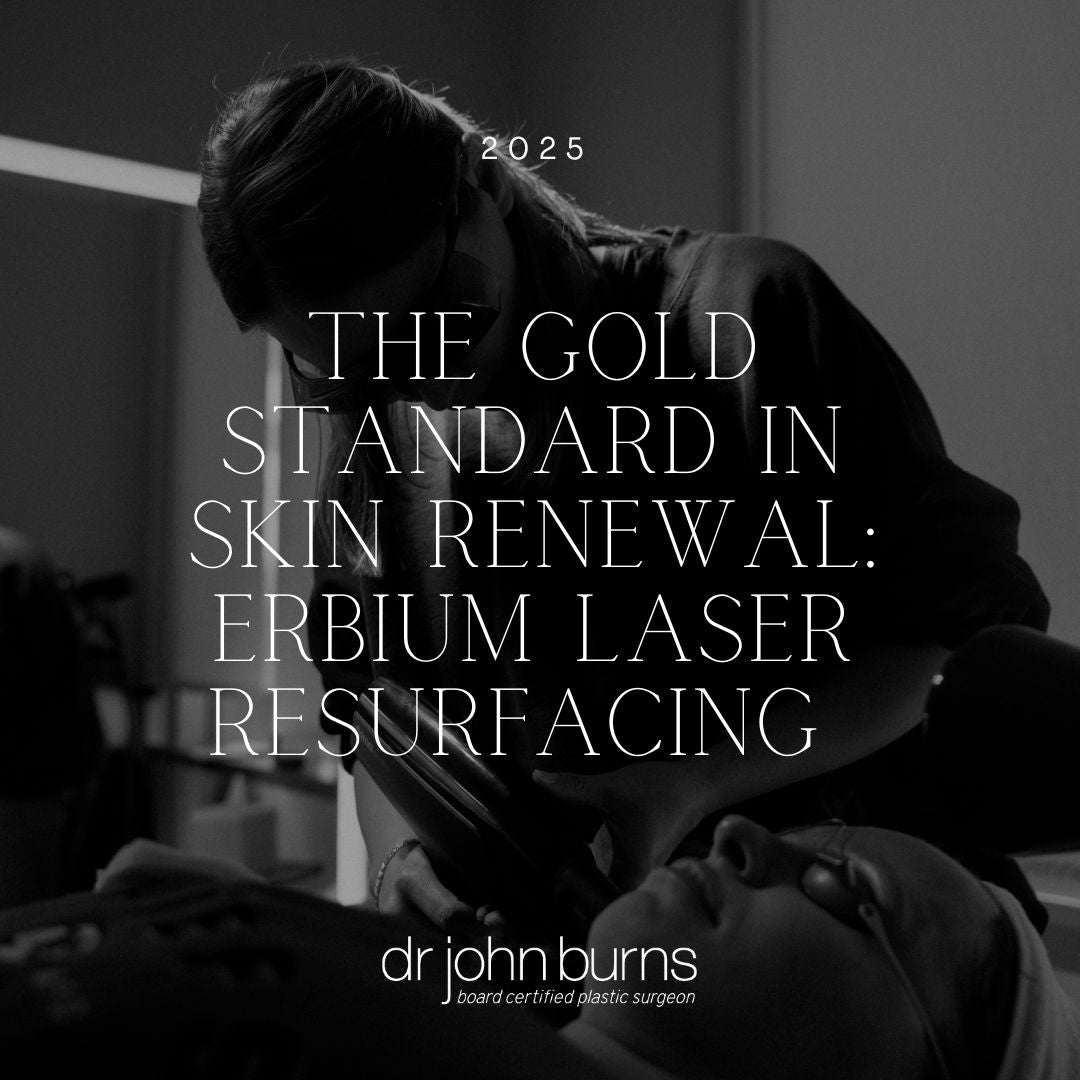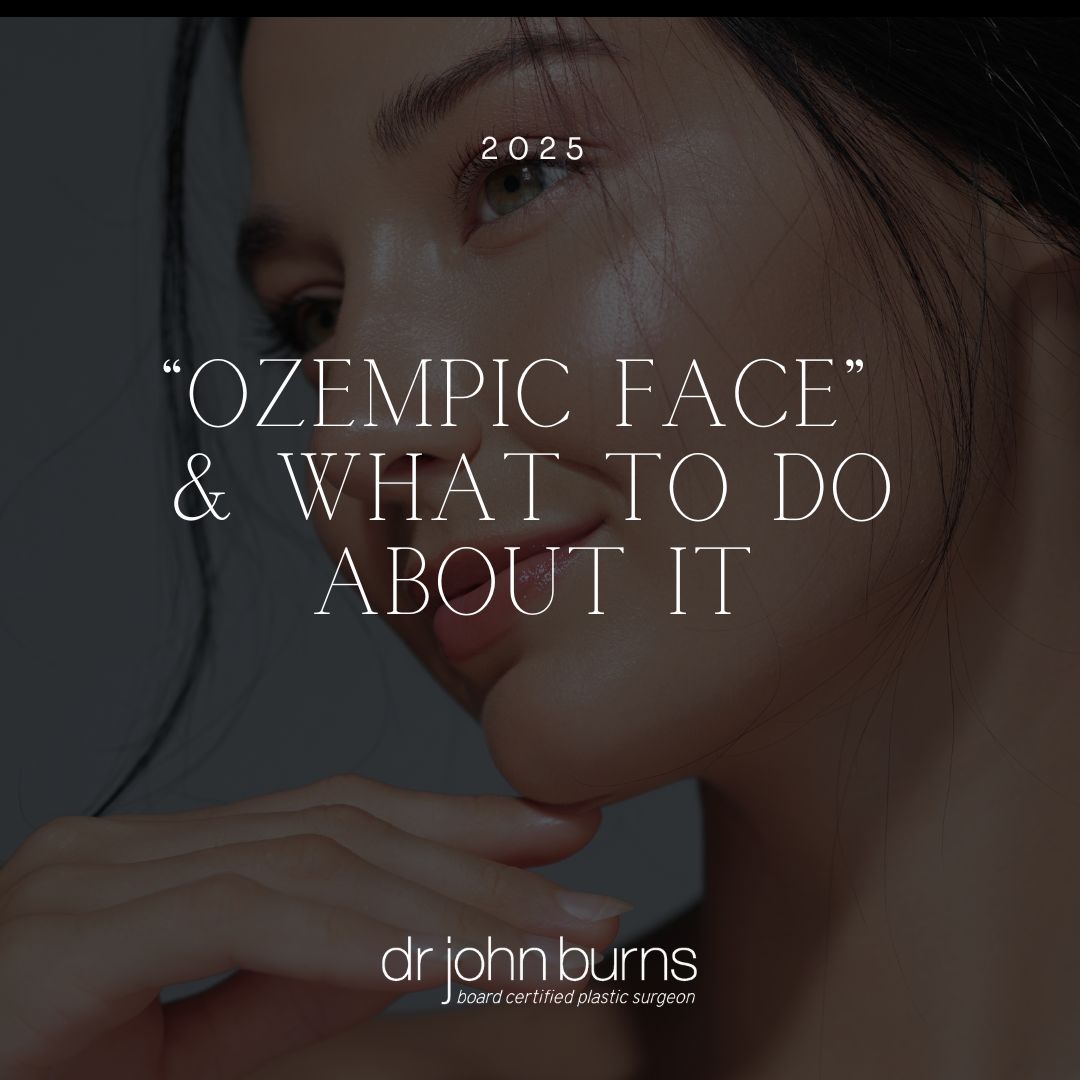July 2023
What's The Perfect
Age For A Facelift?
"What's The Best Age To Get A Facelift?"
20-30 years ago, facelift surgery was traditionally thought of as a procedure for women and men 60 and above. In the last decade plastic surgeons are seeing a shift in the average age of facelift patients with more women and men opting for more proactive facial rejuvenation for an appearance that matches their energy and active lifestyle.
There are a variety of benefits to having a facelift surgery, and a question I'm asked a lot is, "What is the best age to get a facelift?" I'll get this question from people as young as 40 and as old as 75. Let's discuss that, and other commonly asked questions about the facelift procedure.
"Am I Too Young?"
Aging, and especially facial aging, is not for the faint of heart. Most women and men schedule their plastic surgery consult after noticing that gravity is catching up quicker, and Botox and fillers just aren't cutting it anymore. They're noticing changes like loose skin, deep lines, and a double chin. It's during that time that I'll perform an assessment and we'll discuss if the timing makes sense to take a look at surgical options. It can be difficult for some patients to come to terms with the fact that they might be ready for surgical intervention. But when nonsurgical methods have been exhausted, it's time to consider more invasive treatment that provides long-lasting results.
Younger Facelift Patients
Patients on the younger end of the spectrum tend to have exhausted non-invasive means of facial rejuvenation. We call this “filler fatigue” or the realization that botox, fillers, chemical peels, and lasers no longer deliver. Some patients who started with little injection "tweaks" are now doing maintenance treatments every few months. Some have admitted that while they feel young, they don't look as rejuvenated as they used too, for two primary reasons:
1. They metabolize filler and neurotoxin faster, or
2. They've gotten away from maintaining their natural beauty by having countless syringes of filler to maintain volume which has resulted in an artificial or "filler face" appearance.

Signs You're Ready
The effects of gravity in young facelift patients are beyond non-invasive rejuvenation. Patients typically notice the following changes to the face and neck:
-In the upper third region of the face, the brow descends adding droopiness to the upper eyelids. The brow position falls below the eye socket bone.
-In the midface, the facial fat descends causing a disruption at the lower eyelid/cheek junction, hollowing of the lower eyelid, and deepening of the nasolabial folds and marionette line.
-In the lower part of the face, the descent of cheek fat and jowling at the jawline is characteristic of gravitational aging.
-In the neck, there is loss of contour as fat accumulates below the chin, the neck muscle or platysma divides creating bands and loss of contour, and the skin becomes redundant and wrinkles.
These changes usually manifest differently from patient to patient, and typically appear between the ages of 45-55.
A mini or traditional facelift can deliver a beautiful and natural result by repositioning the deep plane or SMAS, removing excess skin, and tightening the muscles in the neck via corset platysmaplasty.
Facelift rejuvenation is generally very rewarding for younger patients, and they like that they can enjoy their 40s and 50s with a face that looks as young as they feel.
Results For Younger Patients
Younger patients tend to fall between needing a mini facelift, and a full or standard facelift. The results can be more subtle as the face is displaying earlier signs of aging. This means that you can look much younger without making radical changes to your facial appearance. Generally speaking, the healing process is smoother for younger patients since their skin regenerates more quickly than it does in much older patients.
Underlying muscle and other facial tissue not having experienced as much sagging or loss of elasticity, these procedures may require less invasive techniques which reduces the amount of downtime involved with healing from the surgery. Furthermore, routine touch-ups can also be done on specific areas as needed for those who want long-term results from their facelifts without any dramatic changes to their appearance. All these factors make getting a facelift at a younger age a very attractive option for anyone looking to rejuvenate their face without any big changes and turn back the clock on facial aging.

This patient had a standard facelift and neck lift Dr. Burns performed a lateral SMASectomy and elevation to raise her skin sag at the lower and midface. Neck and lower face liposuction was also performed to improve her facial contour. Buccal fat removal gave her additional lower face contour while the SMAS stacking created a rejuvenated heart-shaped face.
"Am I Too Old For A Facelift?"
At the opposite end of the facial aging spectrum, there are women and men who desire facelift surgery but are advanced in years and worry about the health risk. These patients are typically candidates for a facelift, provided a few critical steps are followed to ensure safety.
After the age 60 (or earlier, if you have co-morbid medical conditions), it is important to involve your primary care physician to determine if you are in good health and able to have cosmetic surgery. Your primary care doctor will typically run a series of medical clearance tests, including a panel of blood work, chest X-ray, and ECG (heart test). If necessary, you might be sent to a sub-specialist such as a cardiologist for further work-up. In most cases your doctors will clear you for surgery and provide us with their best recommendation for how to specifically manage your unique care.
Proper Anesthesia is Everything-
It is critical that older patients have their anesthesia administered by a board-certified anesthesiologist to closely supervise and manage your vitals during your procedure. In some cases, surgery should be performed in a hospital with more resources to provide you care after your surgery. If this is the case, we will make sure your procedure is performed in the setting with the best possible pre- and post-surgical care for you.
10 year facelift/neck lift results by Dr. John Burns
How Long Will A Facelift Last?
Results will often last about 10 years meaning that when repositioned, it will take about 10 years for gravity to pull the soft tissue back to where it started at the time of the facelift.
One way to look at length of your results is to assume that you will appear about 10 years younger AND that your results will last about 10 years. This means that if you had surgery at 50 years old, you would look like a refreshed 40, and since the results last approximately 10 years, the true value of your results in terms of years is about 20 years.
Getting Secondary
Facelift Surgery
It's important to keep in mind, that at some point, most patients who’ve had a previous rhytidectomy will need an additional procedure to re-tighten the skin and SMAS. We call this secondary facelift surgery. Statistically, most patients will have the procedure in their 50s and another then again around age 70.
Complimentary ConsultUltimately, The Timing For Surgery Is Up To You
A facelift can help restore your youthful appearance and boost your self-confidence. It is a great option for those who feel their face shows signs of aging and want to update its look. However, it’s important to make sure you are ready for plastic surgery before you decide to go ahead with the procedure. The decision to get a facelift should be an informed one; you need to know the risks and understand what it could do for your face.
While there is no “perfect age” for a facelift, the procedure is very rewarding. The most common thing I hear my patients say after their facelift is that I wish I would have done this sooner. For our younger patients, they look as good as they feel and can enjoy their 40s and 50s much more knowing they look great. For our older patients, the same is true, and they love being able to age beautifully.
The best way to determine if it's time for you to have surgery is by scheduling your complimentary in-depth consultation with Dr. Burns. During your time with Dr. Burns, he will assess your facial features, discuss the changes you're noticing, and create a plan that matches your short-term and long term goals for looking and feeling your best.
You May Also Like
Erbium Laser Resurfacing | Dr. John Burns & JOLA Dallas
Preserve Breast Augmentation | Dr. John Burns Dallas TX
“Ozempic Face” Solutions | Facial Rejuvenation by Dr. John Burns
“Lean Lipo” | Smarter, Precision Body Contouring by Dr. John Burns
Stay In Touch
Follow us for news and information on plastic surgery procedures









